Cao Lau Hoi An is a foremost dish from locals to serve million of worldwide travelers. Cao Lau comprises yellow noodles, pork and raw vegetable, everyone usually eat it with rice cracker. This recipe approximates authentic cao lau with easier-to-find ingredients.
Not having eaten Cao Lau means not having visited Hoi An. Cao Lau Hoi An is not only a tasty and unique traditional food, but also a symbol of Hoi An’s pride in the spirit of culinary culture throughout the year. The fresh flavor entices diners. This is an ancient specialty meal related to local culinary culture, and it has become a Hoi An specialty that draws many tourists when they visit.
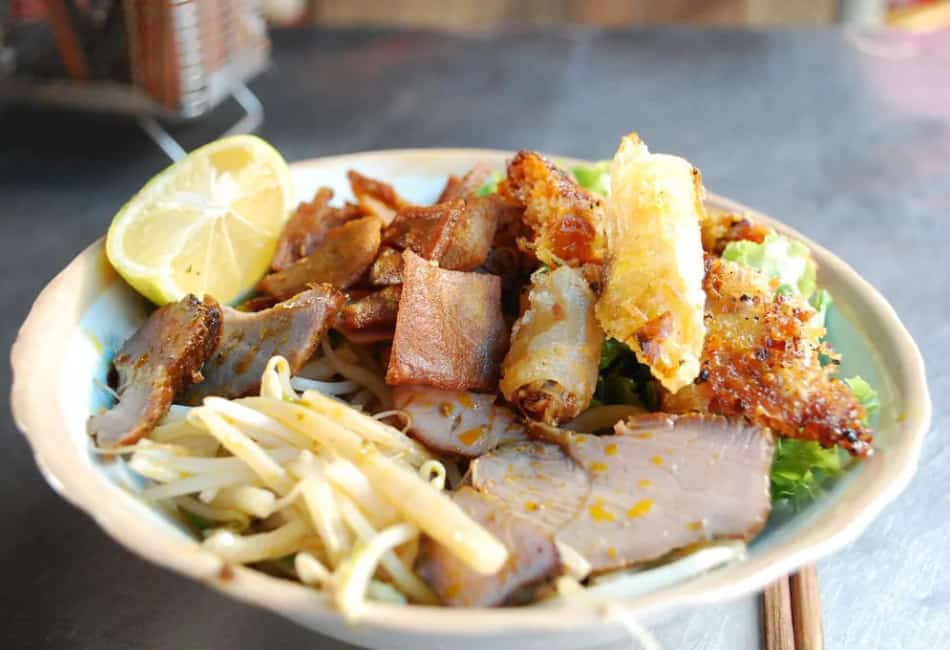
About Cao Lau Hoi An – The Best Cuisine in Hoi An
1. The origin of Cao Lau Hoi An
Cao Lau is a foremost dish in Hoi An. According to records, Cao Lau appeared in the early 17th century, during the most prosperous trading period of Hoi An port. It is not a Chinese or Japanese dish. Cao Lau in Hoi An is a mixture of different cultures in Vietnam and international countries. Cao Lau is not only delicious but also attractive; It is the pride of Hoi An people in terms of culinary culture.
According to locals, Cao Lau first arose in Hoi An around the 17th century, when Eastern and Western merchants arrived to trade. The confluence of culinary cultures from several countries results in a dish with Chinese char siu beef and wonderful chewy noodles comparable to Japanese Udon noodles, making Hoi An Cao Lau stand out.

2. Why is it called “Cao Lau”?
The story of Cao Lau food is interesting to discover. Hoi An was an international port for trading in central Vietnam. There were many merchants worked in the town. They chose to have lunch or dinner on the high storey restaurants to look after their shops and they usually choose this dish to eat. Cao Lau means high storey in English. This food does not taste like any other vietnamese dish because it was often used to serve foreign visitors.
Take part in Hoi An Street Food tour, where the vibrant flavors of local delicacies come to life. Join us as we navigate through the bustling streets, sampling delectable dishes that capture the essence of this charming town’s culinary heritage. Let your taste buds dance with the unique blend of ingredients and spices, as our expert guides lead you to the wonder of Hoi An cuisine.
3. A unique dish in Hoi An
It is cooked from yellow noodles, pork, shrimp and raw vegetables. Like Mi Quang (Quang Noodles), Cao Lau is just used with a little of broth. The special feature of Cao lau is the fresh yellow noddles which is mixed with the ash from cajuput tree from Cham Islands Vietnam.
This dish is made with noodles, pork, and local greens. Noodles of Cao Lau are carefully made from local new sticky rice. It is hand-cut and then cooked three times with firewood. It is invented by the Chinese but similar to Japanese wheat-based udon noodles. Water used to soak rice must be taken from wells in the undisclosed ancient Cham well, just outside the town.
The pork is stir-fried, marinated in star anise and cassia bark. It is sliced thin and cooked in the traditional Chinese method known as “Char siu”. Dry pancakes must be thick with much sesame on the surface. Toppings include peanuts, and bean sprouts making this dish hard to resist. This dish is eaten with lots of herbs and vegetables which greatly enhance its flavors. Cao Lau is surprisingly unique dish in Hoi An.
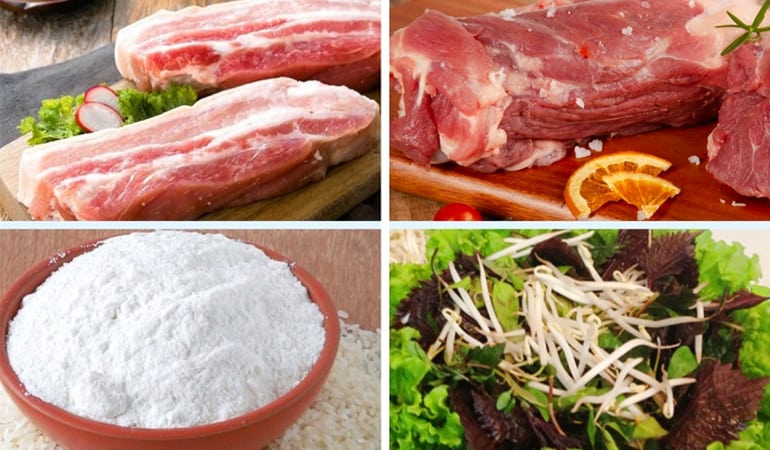
4. Cao Lau Hoi An Recipe:
4.1 Ingredients
- 600 grams of lean minced meat or thigh and pork belly
- 600 grams of pork bones simmered for broth
- 4 onions
- 4 cloves of garlic
- Cooking oil, cashew oil
- Cao Lau (fiber and square ram) Hoi An
- Hoi An chili sauce, green chili
- Raw vegetables
4.2 How to make Cao Lau
Step 1: Processing and preparation
Depending on what you like, choose lean meat (meat combined with lean fat), thigh meat, or pork belly. Choose fresh meat with pinkish marks, firm fibers, and flexibility at the touch. Cut along the long grain, and when finished, it will cut neatly across the grain.
The marinated spices make Hoi An pork pork different from Chinese char siu and make it unique. Crush the onions and garlic and squeeze out the marinated juice so that the flavor is absorbed quickly and, when fried initially, doesn’t burn. Keep the onion and garlic bodies to fry until fragrant later. In addition, there is also soy sauce, sugar, five spices, salt, seasoning powder, pepper, chili powder, and a little cashew oil for a better color (optional). Wash vegetables with water several times.
Step 2: Marinated with spices
Put the meat in a large bowl/bowl, and marinate with 1 packet of five spice (5gr), 4 tablespoons of soy sauce, 1.5 tablespoons of sugar, 1 tablespoon of cashew oil, 1/2 teaspoon of salt, 1/2 teaspoon of salt. 2 teaspoons of seasoning powder, 1/2 teaspoon of pepper, add a little chili powder if you like it spicy. Mix well and marinate for at least 2 – 3 hours. If you have time, wrap it in plastic wrap and leave it in the refrigerator overnight to let the flavor absorb, then when it’s tender, the meat will taste even better.
Step 3: Cook the ingredients
Heat the cooking oil and cook the marinated meat until golden brown on both sides. Turn the meat occasionally to prevent it from burning, then remove and put aside. After that, use a small amount of frying oil to sauté the dried onion and garlic until aromatic, then add the fried meat and marinade. Pour in enough pork broth (bone broth) or cold water to cover the meat, then season with soy sauce and sugar as desired. Bring to a boil, then reduce heat and simmer until the meat is cooked and fragrant. After about 10-15 minutes, turn the meat over to ensure that it is equally colored on all sides.
After 40 to 50 minutes, strain off some of the beef juice to make broth (chan cao lau). Cao Lau noodles are light, thus when soaked in water, they must be slightly richer to absorb the taste nicely. The meat in the saucepan continues to cook until tender; the sauce is absorbed, causing the meat to turn a reddish-brown color. Turn off the stove, let the meat cool, and then slice thinly.
There are two types of Cao Lau. Squares of Cao Lau are fried until golden brown. If you have fresh fibers, cook or steam them until hot. If they are dry, soak them for 1-2 hours to bloom, then blanch in boiling water until tender, drain, and combine with a small amount of oil to make it smooth and not sticky.
Step 4: Serve in a bowl
Place some bean sprouts in the bottom of the bowl, then add the Cao Lau fiber and sliced pork. Sprinkle the water evenly to absorb the taste. Serve the fried ‘ram’ with lemon, Hoi An chili sauce, herbs, and green chili to complete the flavor.
5. The best places to eat Cao Lau
Cao Lau is available in every corner of Hoi An. You can easily find this food in most of restaurants here. However, in this blog we are recommending some of the best places to enjoy this food locally:
5.1 Lien Restaurant: 21 Thai Phien street, Hoi An
Price: 30,000 VND/ bowl
This small family-run eatery is simply equipped with a food preparation court in front and couples of metal tables&plastic chairs just behind. When come to Cao lau Lien, watching how ladies make your noodles before take seat to enjoy is a recommendation. The restaurant opens from 6:30am to 8:00pm daily. Currently, Cao lau Lien is among the best Cao lau restaurants in Hoi An.

5.2 Khong Gian Xanh: 687 Hai Ba Trung, Old Town Hoi An
Price: 30,000 VND – 50,000 VND/ bowl
Close to Japanese covered bridge, it’s not difficult to find out Cao lau Khong Gian Xanh to try its good-tasting noodles. Unlike classic restaurants inside old houses in town, this family-run mecca offers more local vibes. If you are seeking for a place with awesome Cao lau but not too touristy, Khong Gian Xanh will be proper (take note of its convenience to reach all must-see sites in Old town). Late afternoon is the busiest time during the day here so you may have to wait out little longer than common for getting a bowl of noodles.
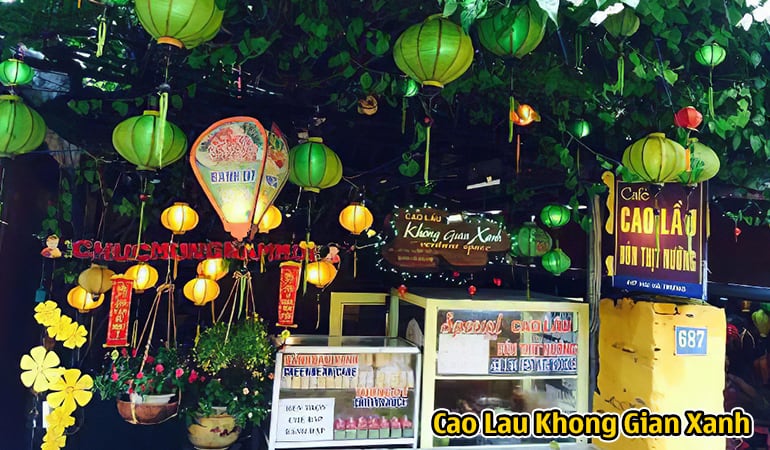
5.3 Trung Bac Restaurant: 87 Tran Phu, Hoi An
Price: 30,000 VND – 50,000VND/ bowl
Either local people or travelers know long-established Trung Bac restaurant by its Hoianese chefs who have talented hands in making delicious Cao lau. Consequently, there is no surprise that Trung Bac is one of the best Cao lau restaurants in Hoi An.
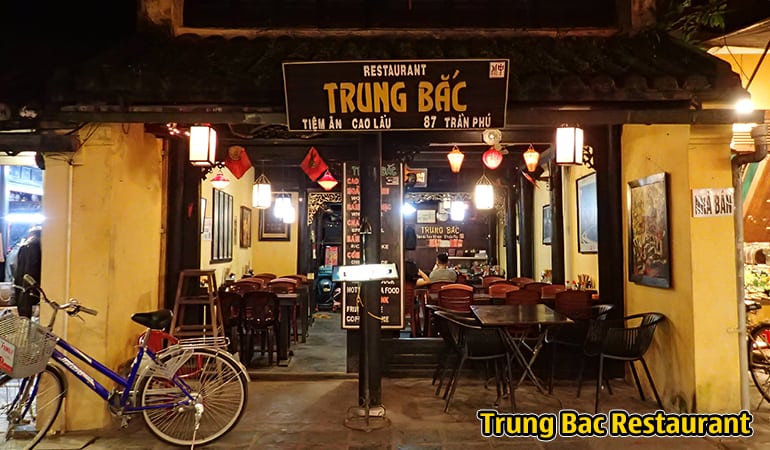
5.4 Cao Lau Thanh
Cao Lau Thanh restaurant serves the greatest Cao Lau in Hoi An. This is a restaurant that was established quite early. Despite its small size, the area is well-organized and clean. A bowl of Cao Lau with complete toppings costs only 30,000 VND. The food’s quality and taste are appealing to a wide range of people, as indicated by the restaurant’s constant patronage, particularly during lunchtime.
Address: No. 87 Tran Phu Street, Minh An Ward, City. Hoi An
Price: 40,000 – 60,000 VND
Opening hours: 9:00 am – 9:00 pm
5.5 Cao Lau Ba Le
Cao Lau Hoi An at Ba Le restaurant is considered to have a very different way of processing compared to many other addresses. The shop owner shares that the rice used to cook noodles here is selected as the best, soaked with straw ash to create a crunchy texture. Besides Cao Lau dishes, this address also has other specialty dishes such as Quang noodles, grilled meat, chicken rice, etc., helping you have more options for your meals.
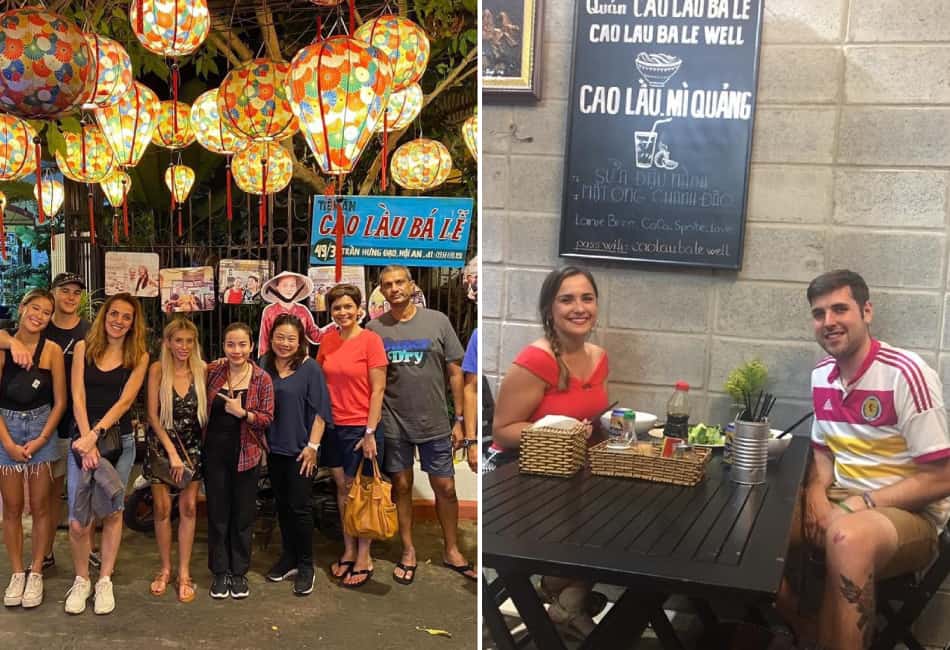
Address: No. 49/3 Tran Hung Dao Street, Minh An Ward, City. Hoi An, Quang Nam
Price: 40,000 – 180,000 VND
Opening hours: 11:00 – 22:00 (Monday – Friday), 7:00 – 22:00 (Saturday – Sunday)
It can be argued that with a distinct aftertaste that cannot be found anywhere else, such as Cao Lau, those who have never had this meal will undoubtedly be intrigued and will order a portion right away to see what it is like. Those who understand Hoi An’s Cao Lau well must love it even more when they visit Hoi An.








